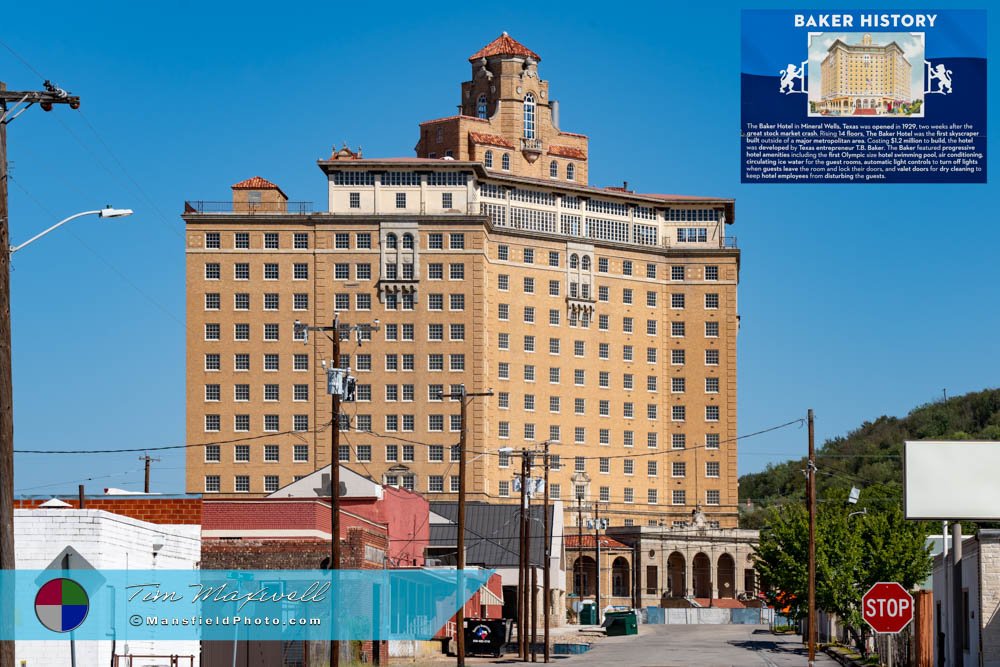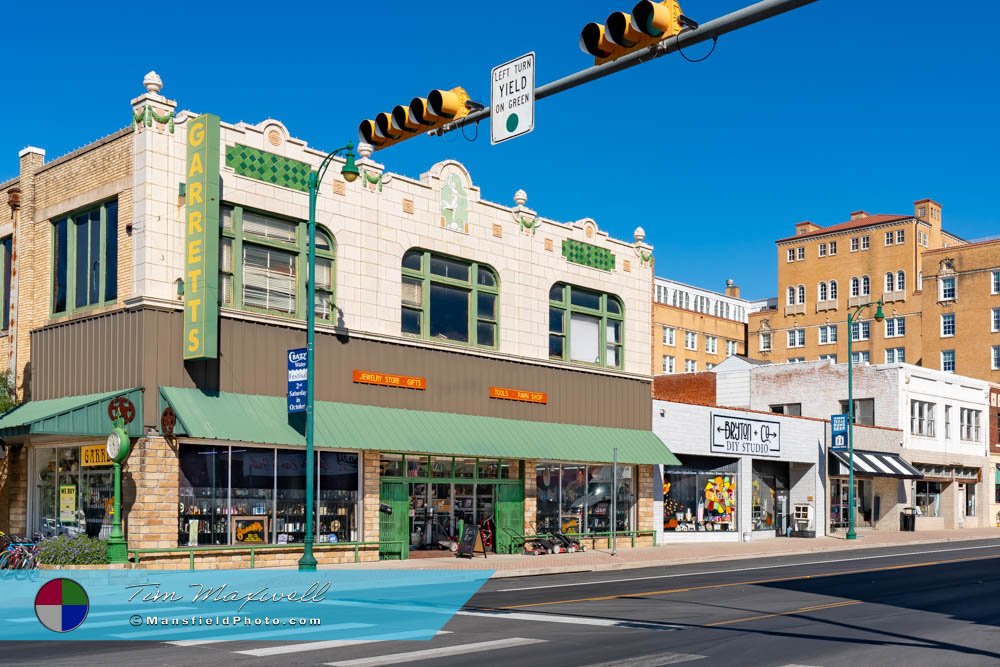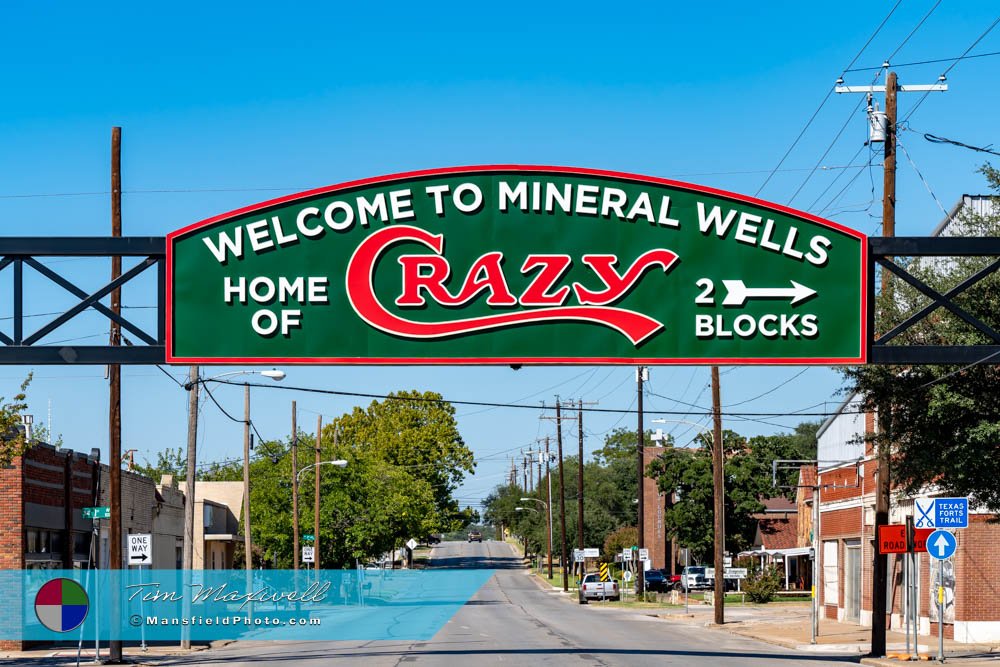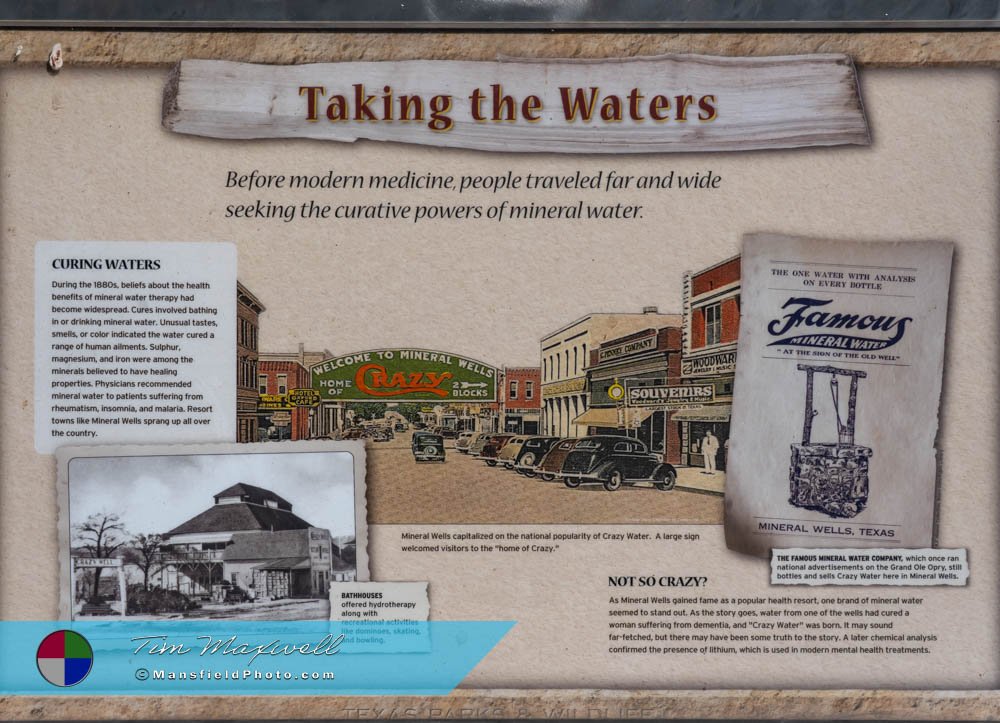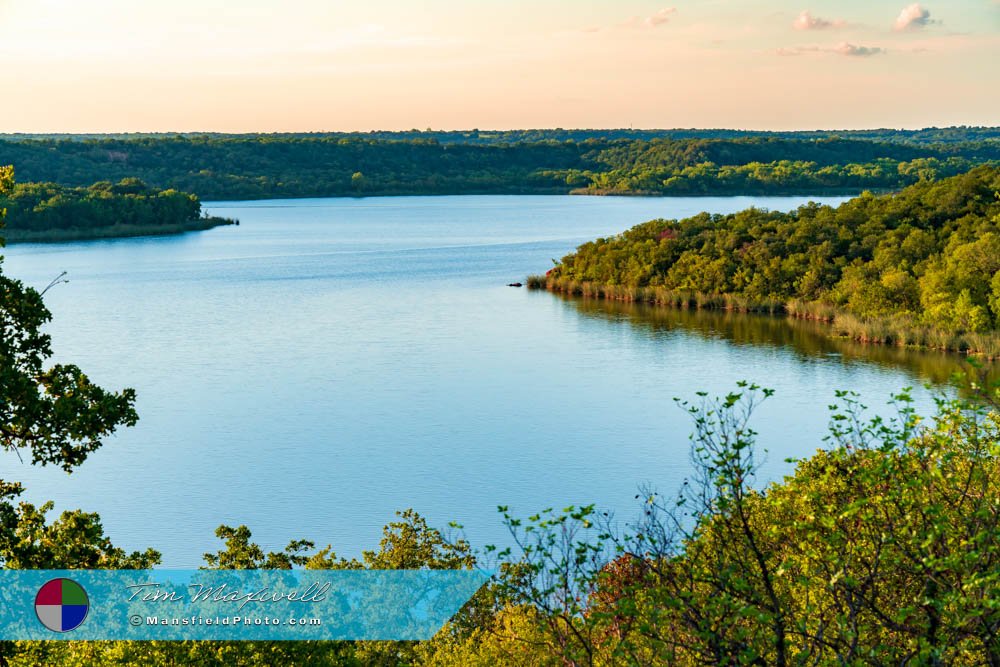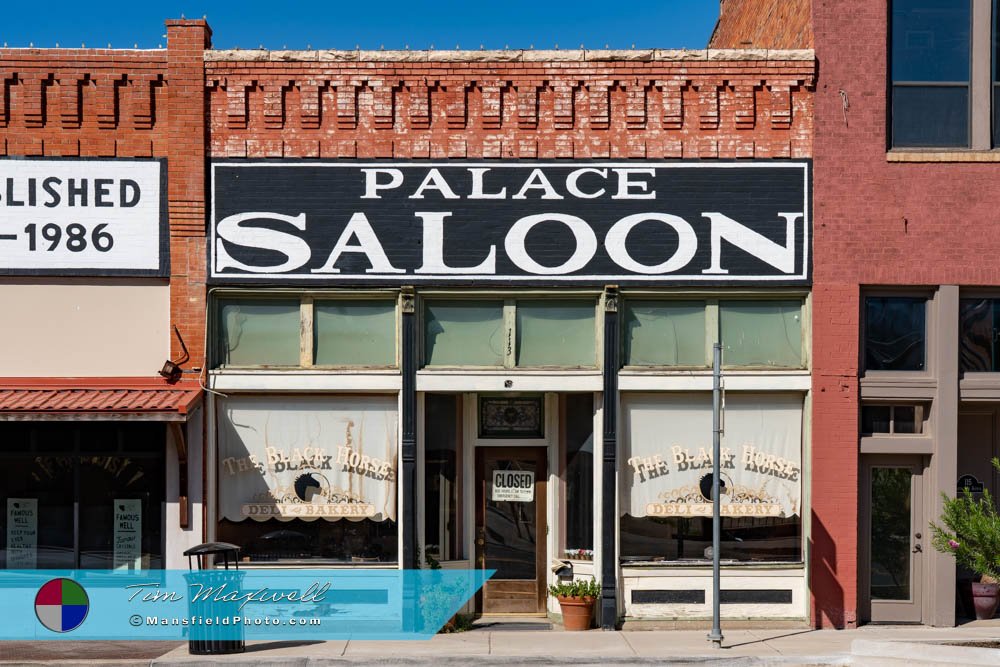Mineral Wells, Texas
– A Healing Past and a Bright Future. 📖
Founded in 1877, Mineral Wells’ history is tied to its unique, mineral-rich waters, which were discovered by settlers suffering from various ailments. A well was drilled on the property of James Lynch in 1880. The water had a funny taste that worried the family, so they watered their livestock with it. Soon after the family began to drink from the well, they found they were feeling better. Word spread quickly, and soon people from all over Texas and beyond began flocking to this small North Texas town seeking the supposed healing powers of its water. In 1881, the town was officially incorporated and named after its most valuable resource—its wells.
The town’s waters earned a reputation for having healing properties, leading to the creation of bathhouses and spas. This newfound fame sparked a tourism boom, transforming Mineral Wells from a quiet settlement into a bustling resort town by the early 20th century. The mineral-rich water became the heart of the local economy, attracting both visitors and entrepreneurs.
The Legendary Baker Hotel
Opened in 1929, this iconic building was designed as a luxurious resort to accommodate the influx of wealthy visitors looking to “take the waters.” Standing tall at 14 stories, the hotel was a symbol of opulence in Texas, featuring grand ballrooms, spas, and even a rooftop pool. The hotel was the first skyscraper built outside a major metropolitan area. It had air conditioning and circulating ice water for the guest rooms!
The Baker Hotel became a magnet for the rich and famous, attracting celebrities like Judy Garland, Clark Gable, and Marlene Dietrich. It was also a destination for politicians and influential figures seeking the healing powers of the local waters. The hotel was more than just a place to stay; it was a social hub, where the elite mingled with the hopes of restoring their health and vitality.
However, after the decline of the mineral water craze and the rise of modern medicine, tourism slowed, and the Baker Hotel closed its doors in 1972. Today, it stands as a grand yet haunting relic, awaiting full restoration. There is a renewed interest in bringing this historic landmark back to life, with restoration efforts currently underway, promising a revival of both the hotel and the town’s tourism.
Downtown Charm: Where History Meets the Present
Downtown Mineral Wells is a time capsule of the town’s golden era. The streets are lined with 100s of historic brick buildings, many of which housed popular bathhouses, hotels, and businesses during the height of the town’s popularity. Today, many of these structures remain, some restored to their former grandeur, while others stand as reminders of a bygone era.
Strolling through downtown, you’ll find unique shops, local restaurants, and museums dedicated to preserving the history of the town’s booming past. While modern businesses have taken root, there’s a distinct sense of nostalgia in the air, making it the perfect place for those seeking both history and small-town charm.
“Home of Crazy” and the Famous Crazy Water
One of the town’s most famous—and enduring—legends revolves around Crazy Water. The story dates back to the 1880s when an elderly woman supposedly drank from Well No. 3 and found relief from her mental health struggles, earning the well the nickname “Crazy Well.” The water, rich in minerals, was soon bottled and sold as “Crazy Water,” a name that endures today.
Crazy Water became synonymous with health and wellness, and people from across the nation sought it out in hopes of curing a wide range of ailments. The brand still thrives today, and visitors can purchase bottles of the famed Crazy Water, visit the historic Crazy Water Bath House, or even attend the annual Crazy Water Festival, which celebrates this quirky part of the town’s identity. Crazy Water remains a proud symbol of the town’s heritage, blending history with modern-day wellness trends.
The Weatherford, Mineral Wells, and Northwestern Railroad
At the height of the town’s fame, transportation was crucial to bring tourists from across Texas and beyond. In 1891, the Weatherford, Mineral Wells, and Northwestern Railway was created to serve that purpose. This rail line connected the town to the larger city of Weatherford, making it easier for tourists to travel and experience the healing waters. The railway played a significant role in bolstering the town’s economy, making it one of the most visited resort towns in Texas during the early 20th century. Though the rail line has long since ceased operation, its contribution to the town’s growth is an important part of its history.
Lake Mineral Wells State Park: A Haven for Outdoor Enthusiasts
Beyond its historic downtown and legendary waters, Mineral Wells is also home to one of Texas’ most scenic outdoor destinations—Lake Mineral Wells State Park. Located just east of the town, this park offers a wealth of recreational activities for nature lovers and adventure seekers alike.
The park features a stunning 640-acre lake, ideal for fishing, kayaking, and paddleboarding. Anglers can try their luck catching bass, catfish, and crappie, while visitors looking for a more relaxed experience can take a leisurely boat ride across the tranquil waters.
For hikers and rock climbers, the park is a true gem. The famous Penitentiary Hollow, one of the few natural rock climbing areas in North Texas, attracts climbers from all over the state. The park also boasts miles of scenic trails, perfect for hiking, biking, and horseback riding. The Cross Timbers Trail, in particular, provides breathtaking views of the lake and surrounding woodlands, making it a must-visit for outdoor enthusiasts.
Camping opportunities abound, with well-maintained campsites offering a chance to experience the beauty of the park up close. Whether you’re pitching a tent or bringing an RV, Lake Mineral Wells State Park provides a peaceful retreat from the hustle and bustle of city life.
The Boom and Bust: The Town’s Rise and Fall
The mineral water craze led to a boom in the early 1900s, with people flocking to the town in hopes of finding relief from their ailments. Spas, hotels, and bathhouses sprang up, and for a time, the town was one of Texas’ premier resort destinations. However, as modern medicine advanced, interest in the supposed healing properties of the water began to wane.
By the mid-20th century, the town’s tourism industry began to decline, and many of the grand hotels and bathhouses closed their doors. The once-thriving resort town fell into relative obscurity, with its famous waters losing their allure.
A Town on the Path of Revival
In recent years, there has been a renewed interest in Mineral Wells and its historic charm. The restoration of the Baker Hotel is a major project that promises to bring new life to the town. When complete, the hotel will once again attract tourists and become a centerpiece of the town’s economy.
Additionally, the town’s wellness industry, centered around Crazy Water, continues to draw visitors interested in its rich mineral content and historical significance.
Beyond its famous water and historic hotel, the town has much to offer. The surrounding hills and countryside along with Lake Mineral Wells State Park (one of our favorites!) provide beautiful hiking and outdoor activities, while the thriving downtown area invites visitors to explore its shops and cafes. Mineral Wells is a town with a unique blend of past and present, where history buffs, wellness enthusiasts, and small-town explorers can find something to love.
Interesting Facts and Famous Visitors
The town’s history is dotted with fascinating facts and notable visitors. Aside from Judy Garland and Clark Gable, President Lyndon B. Johnson was known to visit the town to experience the healing waters. Additionally, the area is home to the Mineral Wells Fossil Park, where visitors can hunt for fossils, adding to the town’s appeal for families and history lovers alike.
Present Day: A Must-Visit Small Town in Texas
Today, the town is experiencing a resurgence. With its historical charm, efforts to restore its most iconic buildings, and the enduring appeal of Crazy Water, it is becoming a sought-after destination once again. The annual Crazy Water Festival, the restoration of the Baker Hotel, and the growing interest in wellness tourism are breathing new life into the town. Whether you’re drawn to its quirky history, its scenic beauty, or its relaxing mineral waters, the town offers something for everyone.
For these reasons, Mineral Wells has earned its spot as one of our top ten favorite small towns in Texas. It’s more than just a relic of the past—it’s a town on the verge of a bright future, and one that should be on your Texas bucket list.
📸 Interested in More Photos of This Town?



